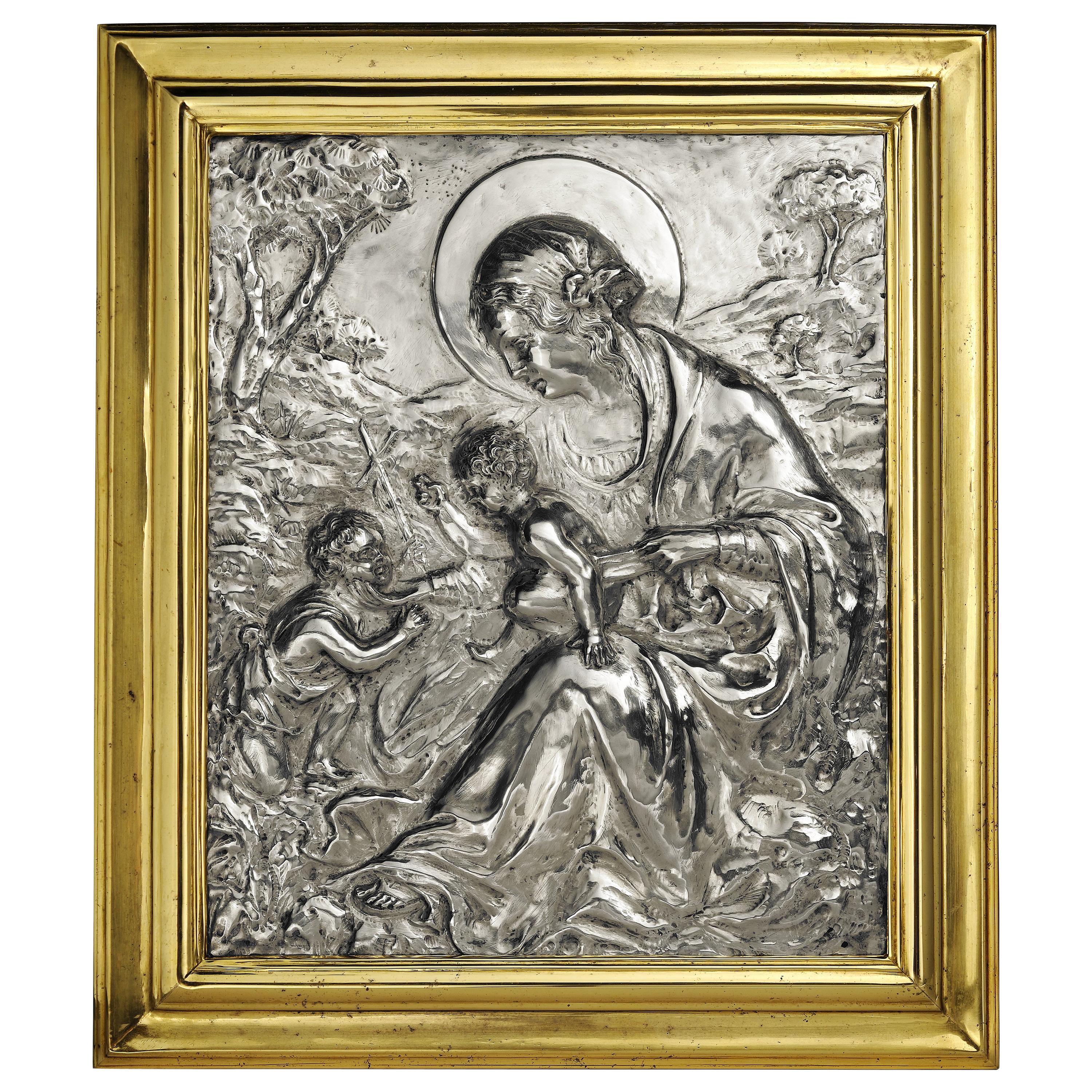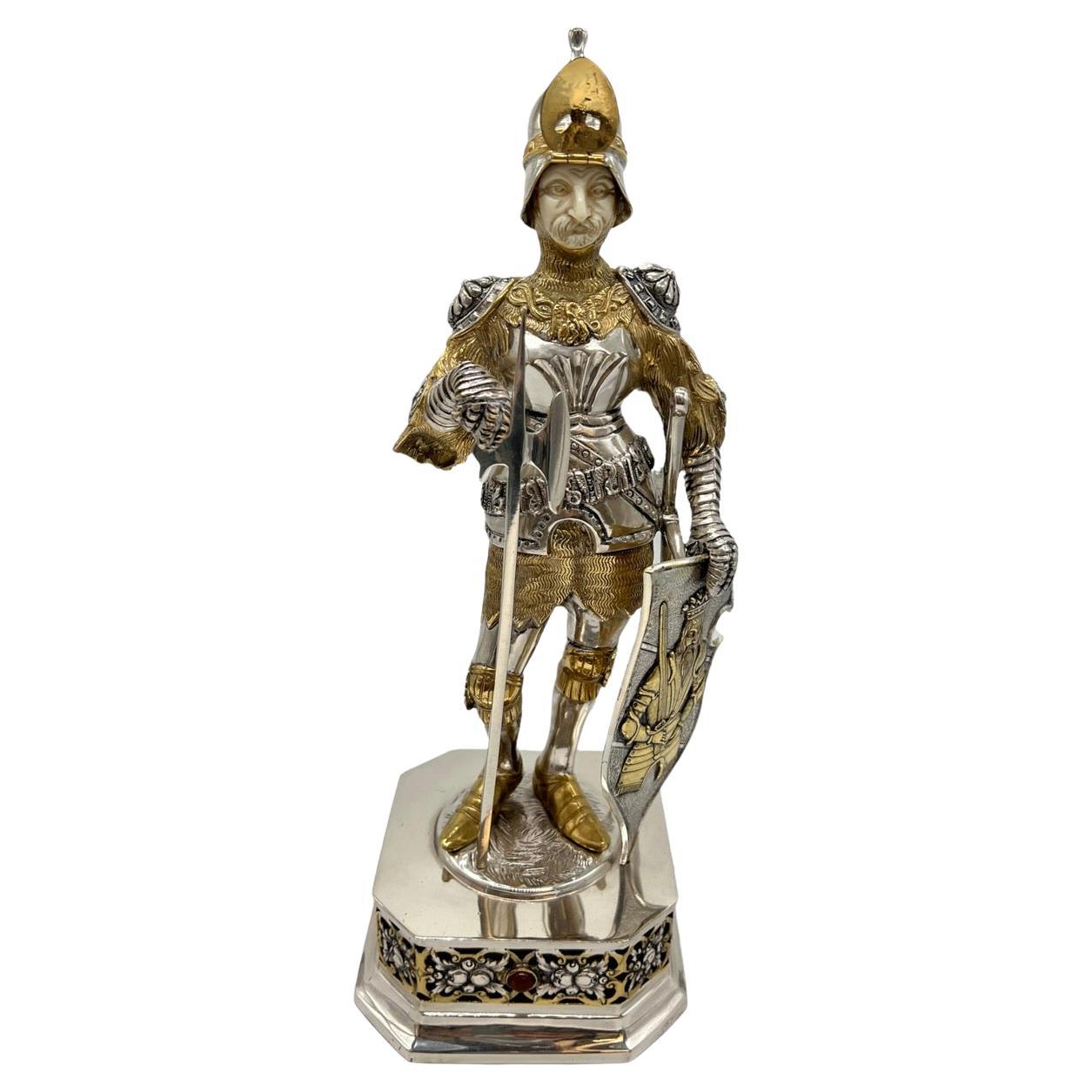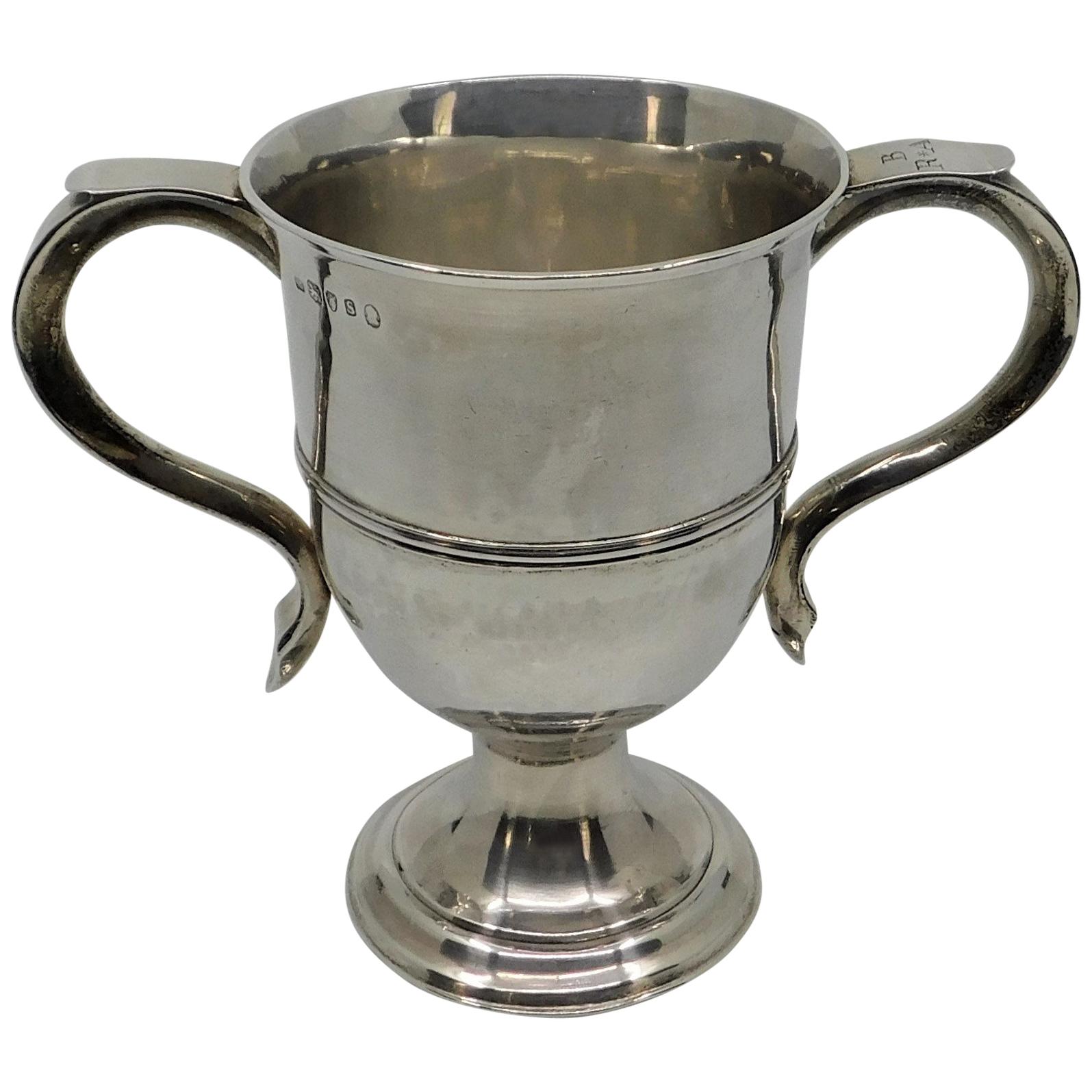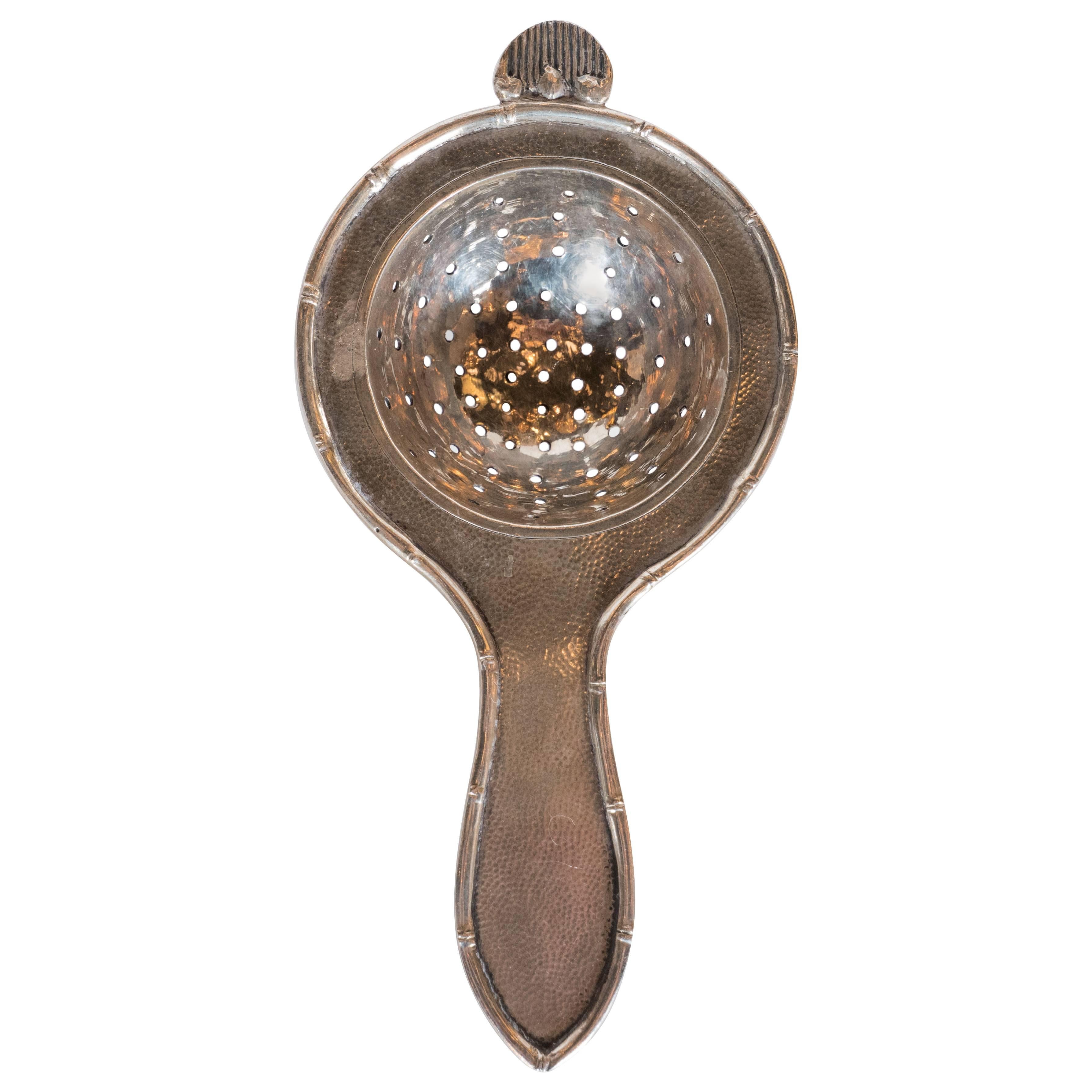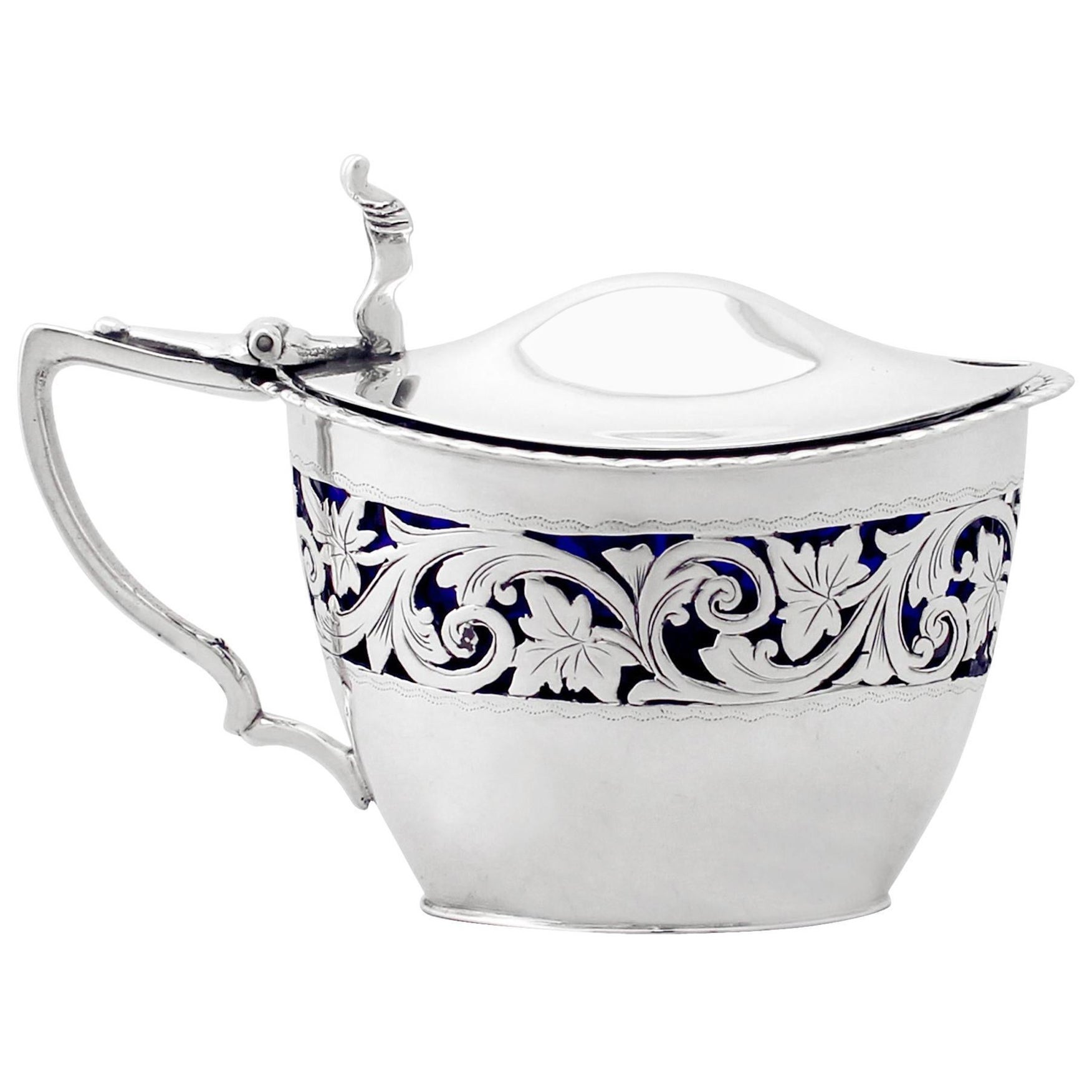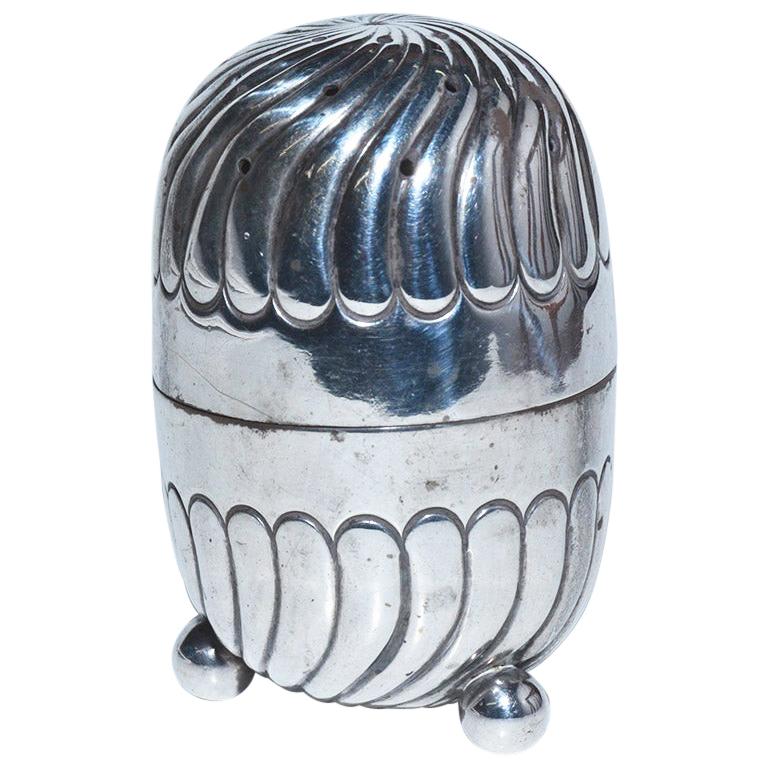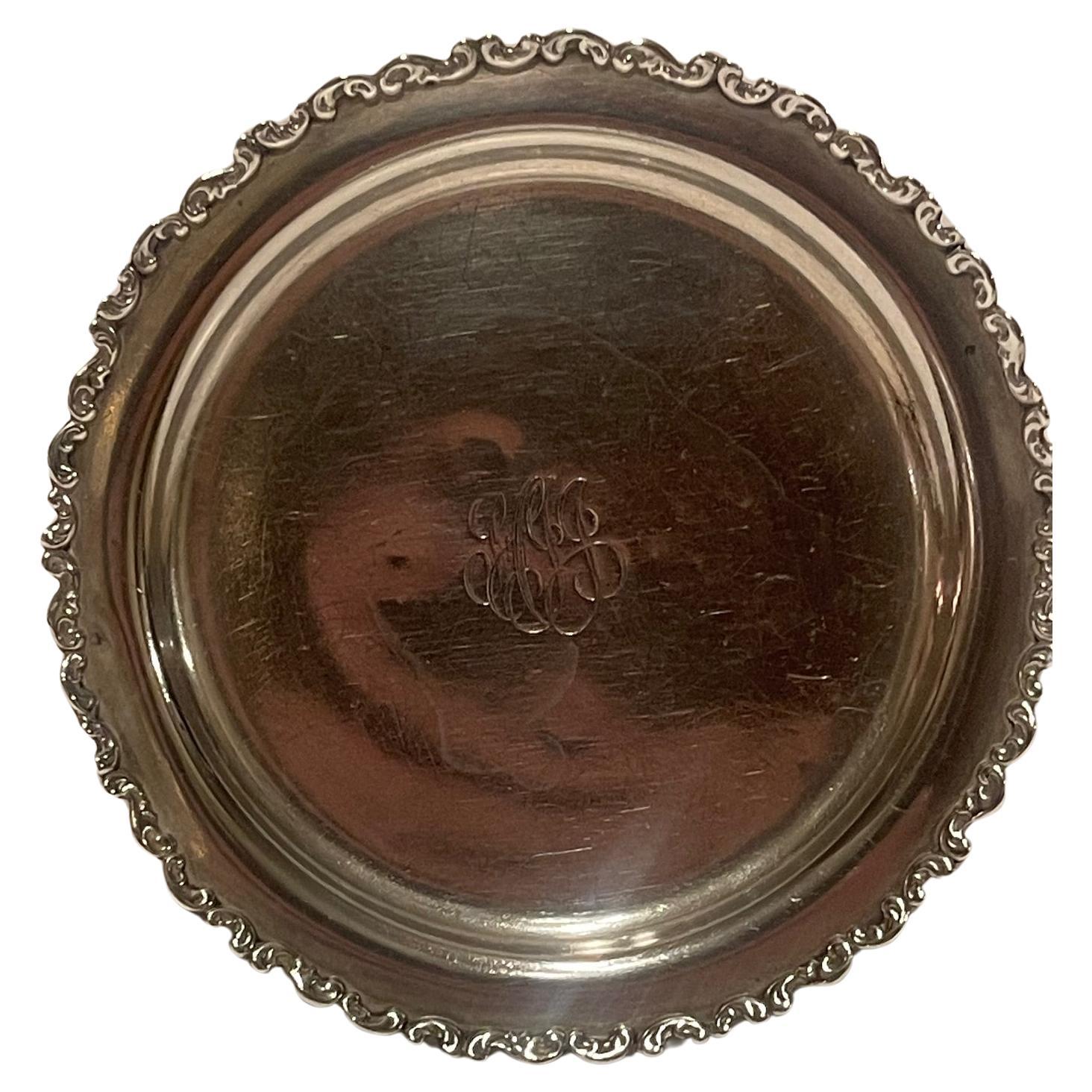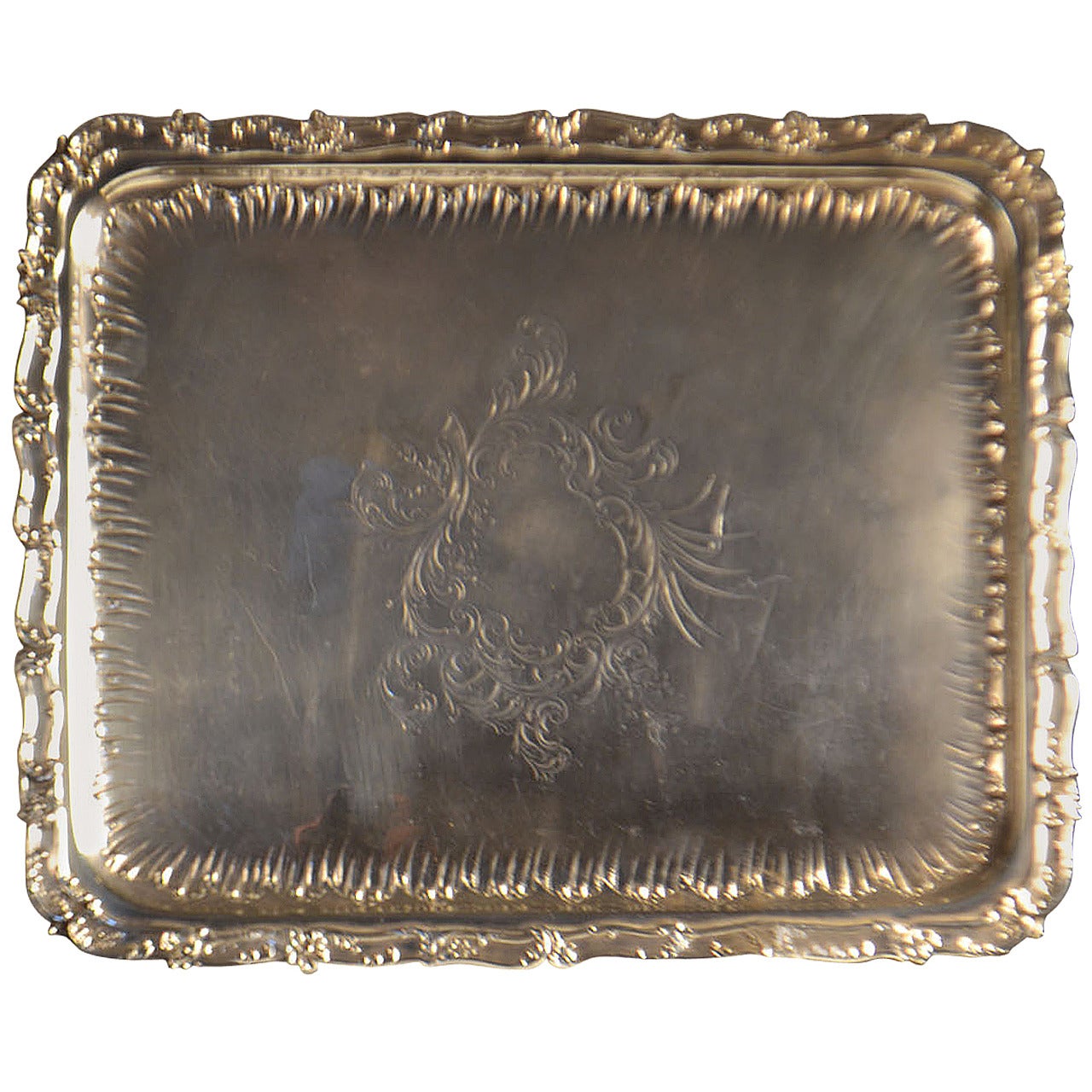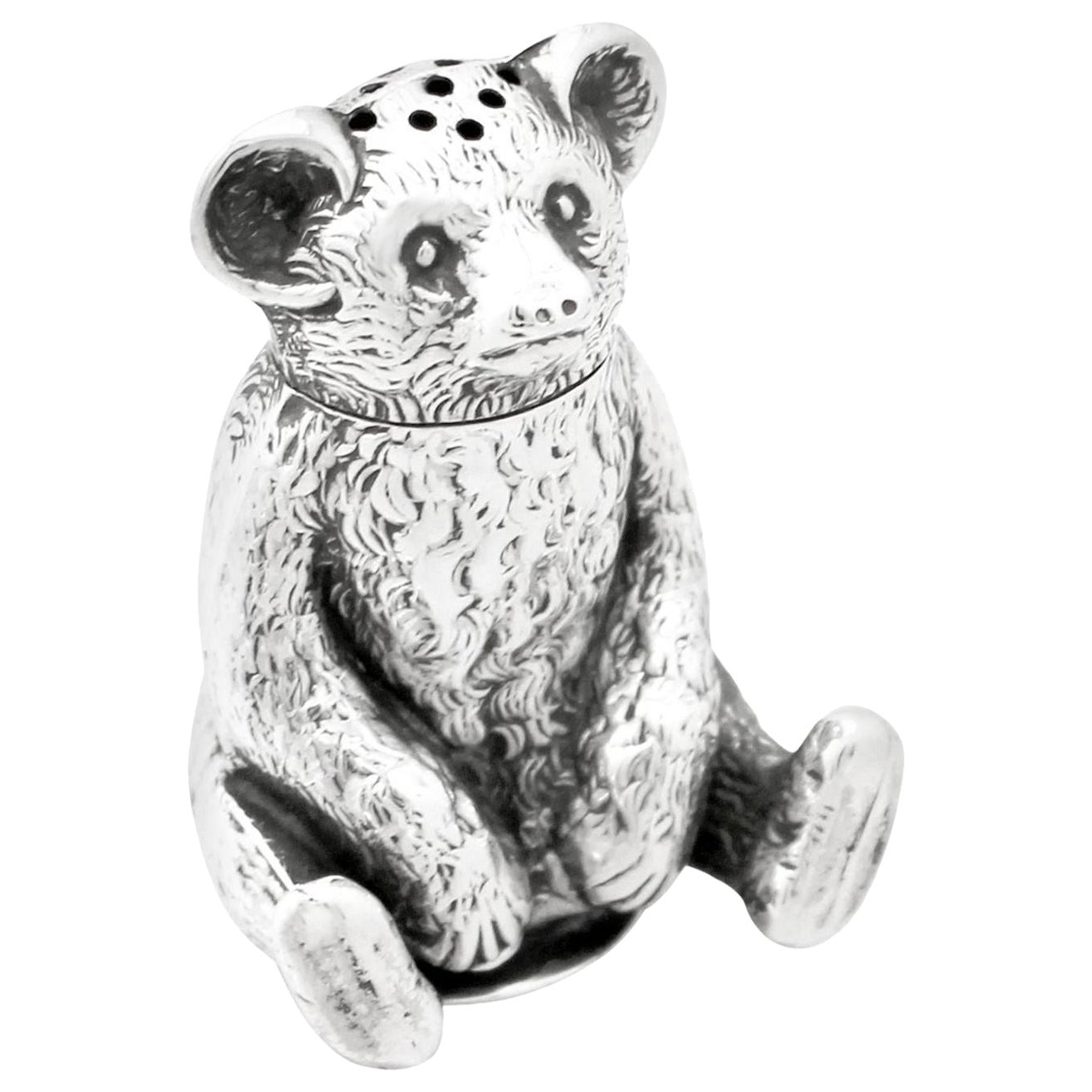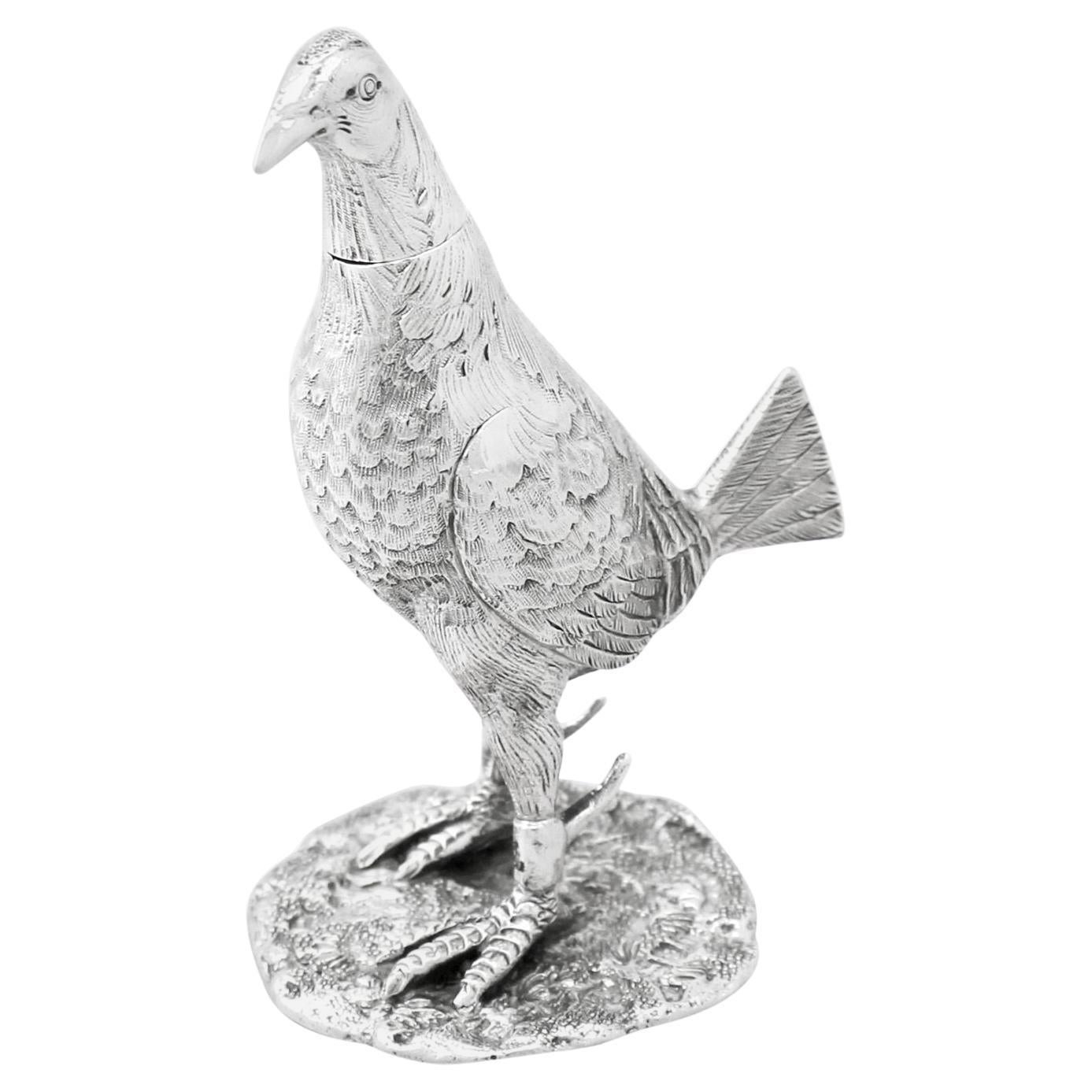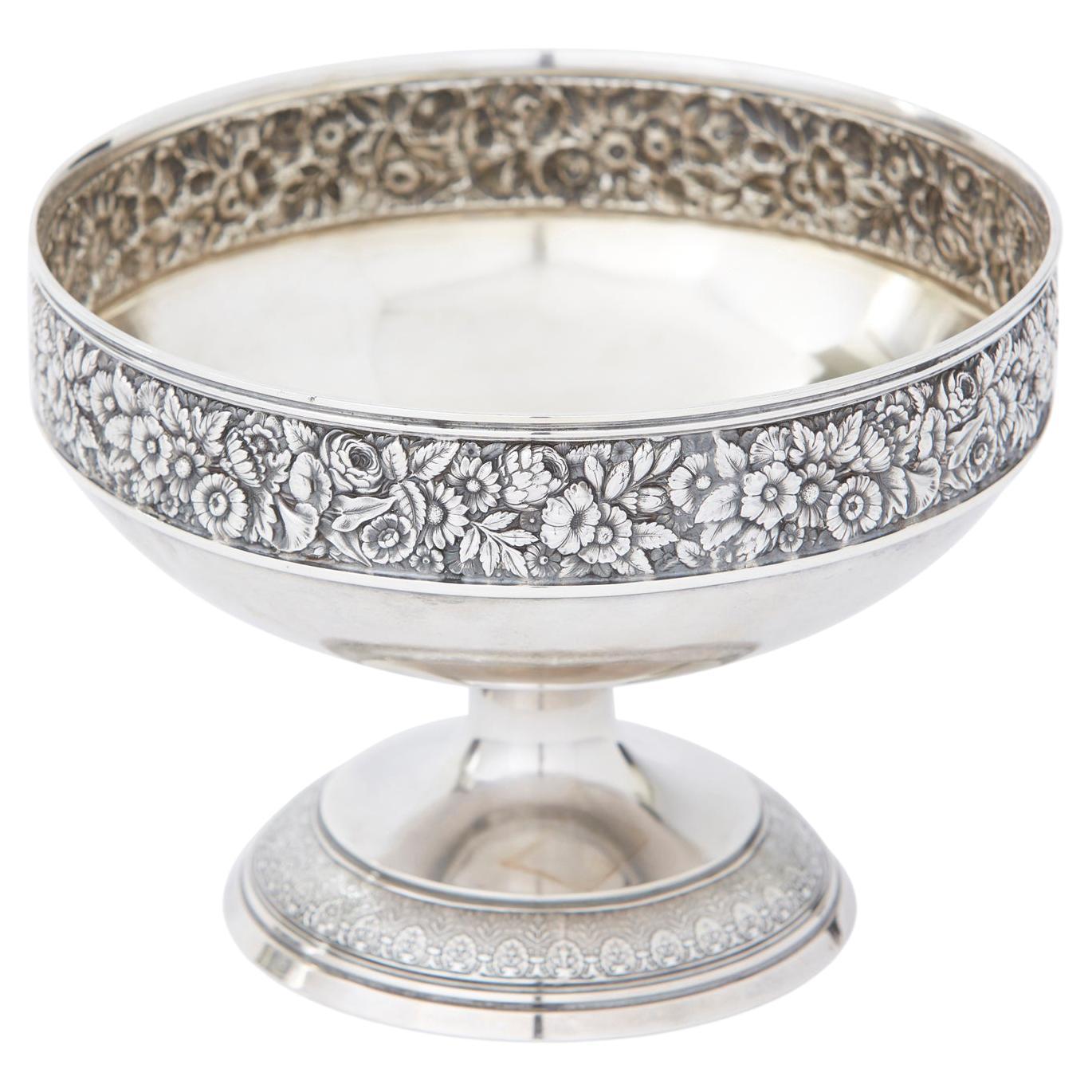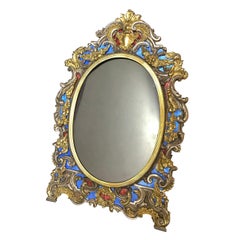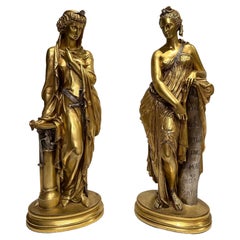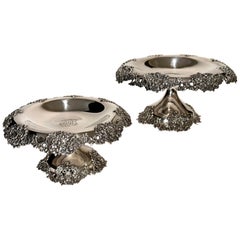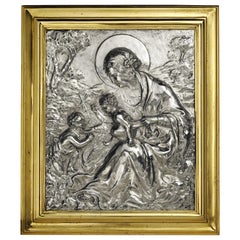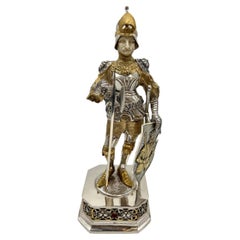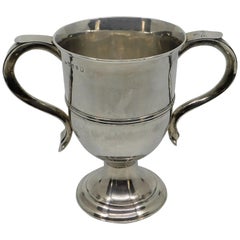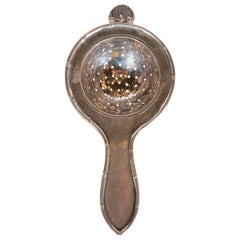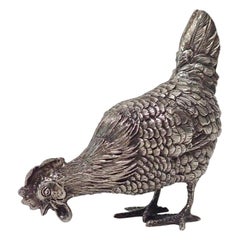
19th Century English Sterling Silver Chicken
View Similar Items
Want more images or videos?
Request additional images or videos from the seller
1 of 12
19th Century English Sterling Silver Chicken
About the Item
- Dimensions:Height: 3 in (7.62 cm)Width: 1.62 in (4.12 cm)Depth: 3 in (7.62 cm)
- Materials and Techniques:
- Place of Origin:
- Period:
- Date of Manufacture:1880
- Condition:Wear consistent with age and use. Beautiful estate condition.
- Seller Location:Norwood, NJ
- Reference Number:1stDibs: LU5080216747131
About the Seller
5.0
Platinum Seller
Premium sellers with a 4.7+ rating and 24-hour response times
Established in 1989
1stDibs seller since 2019
202 sales on 1stDibs
Authenticity Guarantee
In the unlikely event there’s an issue with an item’s authenticity, contact us within 1 year for a full refund. DetailsMoney-Back Guarantee
If your item is not as described, is damaged in transit, or does not arrive, contact us within 7 days for a full refund. Details24-Hour Cancellation
You have a 24-hour grace period in which to reconsider your purchase, with no questions asked.Vetted Professional Sellers
Our world-class sellers must adhere to strict standards for service and quality, maintaining the integrity of our listings.Price-Match Guarantee
If you find that a seller listed the same item for a lower price elsewhere, we’ll match it.Trusted Global Delivery
Our best-in-class carrier network provides specialized shipping options worldwide, including custom delivery.More From This Seller
View All19th Century Italian Gilt Sterling Silver And Enamel Picture Frame
Located in Norwood, NJ
Antique (gilt) vermeil over sterling silver ornate picture frame with red and blue vitreous enamel, Italy, circa 1890. Has hallmark on front. Oval...
Category
Antique Early 1900s Italian Rococo Picture Frames
Materials
Gold Plate, Enamel, Sterling Silver
Pair of 19th Century Gilt and Silvered Bronze Sculptures of Women
By Pierre-Eugène-Émile Hébert
Located in Norwood, NJ
Rare pair of bronze sculptures by Emile Herbért. Fine quality silvered and gilt bronze figures of a warrior woman and a poet women dressed accordingly with military attire and poetic words. Signed and foundry marked with the G. Servant mark.
Pierre-Eugène-Emile Hébert, French, (1828 - 1893).
A native Parisian, Hébert apparently lived and worked in the capital until his death. He was born in 1828, and studied sculpture privately, with his father Pierre (1804-1869) and Jean-Jacques Feuchère (1807-1852), both of whom pursued modestly successful careers in the Salon and as public sculptors beginning in the 1830s. Hébert learned extensively from their very divergent paths. Whereas Pierre Hébert...
Category
Antique 1860s French Figurative Sculptures
Materials
Gold, Silver, Bronze
Sterling Silver Pitcher Engraved By Shreve & Co.
By Shreve, Crump & Low
Located in Norwood, NJ
Large sterling silver pictorial water pitcher by Shreve & Co. Artist engraved and decorated large 5 1/2 pint sterling silver pitcher. Unique Shreve & Co. San Francisco. 5 1/2 pint sterling silver pitcher with artist designed raised and engraving decoration of playful cats and kittens. Maker's mark...
Category
Vintage 1920s American Art Deco Pitchers
Materials
Sterling Silver
Pair Of Tiffany & Co. Sterling Silver Compotes
By Tiffany & Co.
Located in Norwood, NJ
Beautiful pair of late 19th century/early 20th century Tiffany & Co sterling silver compotes.
The sloping edge of the tray and base of the leg in heavy floral repousse and pierced work.
Marked inside the pedestal Tiffany...
Category
Early 20th Century American Sterling Silver
Materials
Sterling Silver
$2,475 / set
Sterling Silver Mounted Royal Doulton Blue Glazed Pitcher
By Royal Doulton
Located in Norwood, NJ
Art Nouveau sterling silver mounted and fully hallmarked Royal Doulton blue glazed lidded pitcher. 19th century petite pitcher with raised Art Nouve...
Category
Antique 1890s English Art Nouveau Pitchers
Materials
Sterling Silver
19th Century French Patinated Bronze Bust Of Ariadne
Located in Norwood, NJ
Antique 19th century French patinated bronze bust of Ariadne retailed by Tiffany & Co. Beautiful Grand Tour model mounted on a gilt bronze and rouge marble plinth. Marked Tiffany & Co. with inventory number.
The Antinous bust based on the Lansdown Antinous marble found at Hadrian’s Villa...
Category
Antique 19th Century French Grand Tour Busts
Materials
Bronze
You May Also Like
19th Century Italian Sterling Silver Madonna, circa 1830
Located in Milano, IT
Embossed and engraved silver plaque
La Madonna del lago (The Madonna of the Lake)
Probably Milan, post 1824
Brass frame
It measures 16.14 in x 13.85 in (41 x 35.2 cm) and it weighs 10.357 pounds (4.698 g): silver 1.31 pounds (598 g) + brass 9.03 pounds (4.100 g)
State of conservation: some abrasions on the bottom. The frame is old, but not original.
The plaque is made up of a sheet of embossed and engraved silver, and held in a solid brass frame. It depicts the “Madonna del lago” – “Madonna of the Lake” - (the Madonna with Child and San Giovannino) by Marco d'Oggiono (Oggiono, 1474 circa - Milan, 1524 circa), while changing only the background landscape. Almost certainly the subject reproduced in the plaque was taken from a famous engraving by Giuseppe Longhi (Monza, 1766 - Milan, 1831), one of the greatest engravers of his era.
The silver is unmarked, probably because originally the Madonna was due to be exposed in a church: sometimes precious metals destined for worship and liturgical use would be exempted from payment and were, therefore, not marked.
It is very likely that the plaque was made in Milan because in this city in 1824 the engraving by Giuseppe Longhi was made and printed. In addition, in Milan, the alleged lost painting by Leonardo da Vinci in his Milanese period (1482-1500) would be produced; this is the painting from which Marco d'Oggiono took his version.
The painting
Marco d?Oggiono was one of Leonardo da Vinci's most brilliant students and collaborators (D. Sedini, Marco d’Oggiono, tradizione e rinnovamento in Lombardia tra Quattrocento e Cinquecento, Roma 1989, pp. 151-153, n. 56; p. 225, n. 124, with previous bibliography). His style reflects in every way that of the Tuscan Maestro, so much so that he was the one who executed some copies of da Vinci's paintings. The execution of the “Madonna del Lago” probably draws inspiration from a lost painting by the Maestro, created while he was living in Milan (1482-1500). There are many similarities with other works by Leonardo such as the “Vergine delle rocce” or the “Vergine con il Bambino e San Giovannino, Sant’Anna e l’Agnello”.
The painting, from which the drawing and then the famous engraving were taken, is found today at the M&G Museum of Bob Jones University in Greenville, South Carolina, where it came to rest after the sale of the Harrington Collection in London in 1917.
The work appears in the inventories of the collection of Napoleon and Joséphine Bonaparte at the castle of Malmaison, before 1809.
The Malmaison building was born and developed in the 17th and 18th centuries. In the 18th century it belonged to Jacques-Jean Le Coulteux du Molay, a wealthy banker. Later, during the Directory, Joséphine Bonaparte de Beauharnais bought it on April 21st, 1799, but settled at the castle definitively only after her husband separated from her in 1809. She remained there until 1814, the year of her death. When Joséphine died, the estate passed to her son Eugène de Beauharnais, who moved to Munich with his whole family in 1815, bringing with him the collection of paintings he inherited from his mother. Eugène died in 1824 and his wife Augusta of Bavaria (von Bayern), unable to keep it, in 1828 sold the Malmaison to the Swedish banker Jonas-Philip Hagerman.
It is likely that in this period Augusta also sold part of the paintings inherited from her husband, including the “Madonna del Lago”. This painting then came into the possession of Leicester Stanhope, fifth Earl of Harrington (1784 - 1862) and then was passed down to his descendants.
In 1917, at the death of Charles, eighth Earl of Harrington, his brother Dudley inherited the title and properties and he put up a part of his collections for sale. Among these, precisely, the painting by Marco d'Oggiono was to be found.
On the occasion of that auction the painting was presented as a work by Cesare da Sesto, by virtue of a handwritten note by the Countess of Harrington on the back of the table. However, already in 1857, the German critic Gustav Waagen had identified Marco d'Oggiono as the author of the painting, then exhibited in the dining room of Harrington House in London (Treasures of Art in Great Britain, in 4 volumes, London, 1854 and 1857).
The engraving
Giuseppe Longhi was one of the most renowned engravers in Italy between the end of the 18th century and the first quarter of the 19th century.
In 1824 Giuseppe Longhi, based on a design by Paolo Caronni, made a famous engraving of the painting of Marco d?Oggiono. The activity of Longhi was then at the peak of his notoriety, enough to earn him very substantial commissions; it is not risky to suppose that some of his successful engravings were also reproduced using other means: in our case in silver. (A. Crespi, a cura di, Giuseppe Longhi 1766–1831 e Raffaello Morghen...
Category
Antique 1820s Italian Neoclassical Sterling Silver
Materials
Sterling Silver, Brass
19th Century German Extremely Detailed Sterling Silver and Gold Gilt Knight
Located in North Miami, FL
19th Century German extremely detailed sterling silver and gold gilt knight figure. Knight in full suit of armour, carved face beneath a hinged viso...
Category
Antique 19th Century German Sterling Silver
Materials
Stone, Sterling Silver
Early 19th Century English Sterling Silver Drinking Cup
Located in Hamilton, Ontario
Double handle sterling silver English cup, circa 1813. Unknown maker mark.
Category
Antique Early 19th Century English Sterling Silver
Materials
Sterling Silver
English 19th Century Sterling Silver Perforated Tea Strainer
Located in New York, NY
This beautiful and refined tea strainer was realized in England- arguably the birthplace of fine silverware- during the 19th century. It features a con...
Category
Antique 19th Century English Victorian Sterling Silver
Materials
Sterling Silver
19th Century Victorian English Sterling Silver Mustard Pot
By Stokes & Ireland Ltd
Located in Jesmond, Newcastle Upon Tyne
A fine and impressive antique Victorian English sterling silver mustard pot; an addition to our silver cruets/condiments collection.
This exceptional antique Victorian sterling silver mustard pot has an oval tapering form.
The body of the mustard pot is embellished with a broad shaped band of pierced scrolling leaf ornamentation flanked with undulating wigglework decorated borders.
The flared upper rim of this silver mustard pot is encompassed with an applied gadroon decorated border.
This Victorian mustard pot retains the original hallmarked hinged, plain domed cover surmounted a shaped bifurcating thumbpiece.
This fine example of antique silverware is fitted with a shaped handle featuring an incurved, shaped thumbpiece.
The mustard pot is fitted with the original removable blue glass liner.
This impressive sterling mustard pot...
Category
Antique 1890s English Victorian Sterling Silver
Materials
Silver, Sterling Silver
19th Century English Sterling Silver Two-Piece Salt Shaker
Located in Sheffield, MA
The 19th century sterling silver salt shaker stands on three ball feet and separates at the waist level. The bottom is stamped "PH" and has the sterling symbol of the English rampant...
Category
Antique Mid-19th Century English Regency Sterling Silver
Materials
Sterling Silver
$390 Sale Price
40% Off
Recently Viewed
View AllMore Ways To Browse
Ethan Allen Queen Bed
Ethan Allen Secretary
Ethan Allen Server
Ethan Allen Trestle Table
Ethan Allen Vanity
Ethan Allen Vintage Hutch
Eton Rowing
Eucharist Chest
Eugen Ferner
Eugene Dietzgen
Eugene Gregan
Eugene Kloszewski On Sale
Eugene Leslie Smyth
Eugenie Fish Glaman
Eugenio Benini Painting
Eureka Pedal Cars
Eve Clendenin
Everglades Club
